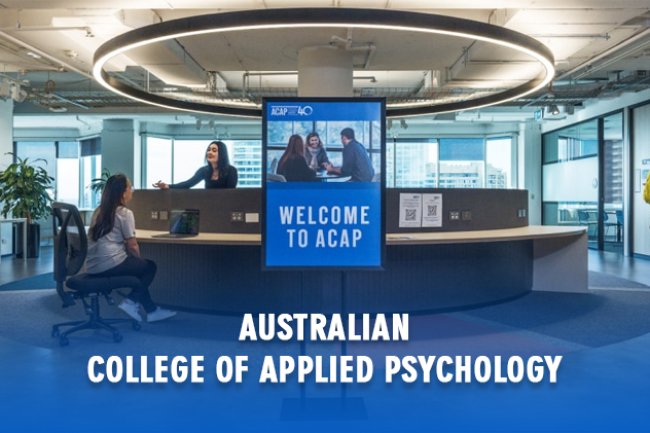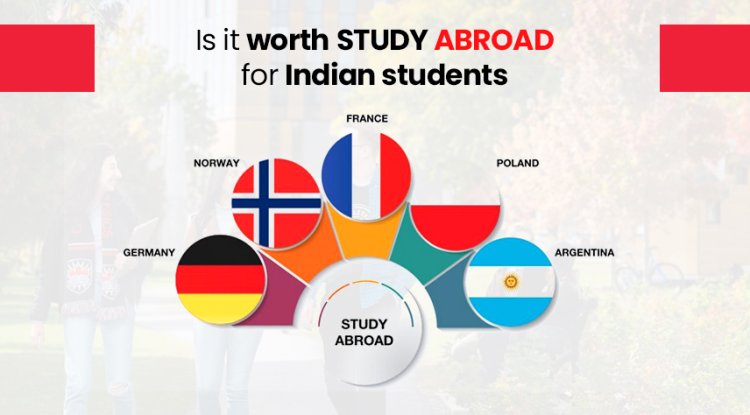Australia’s Genuine Temporary Entrant (GTE) Assessment
Australia's Genuine Temporary Entrant (GTE) assessment is a crucial component of the student visa application process. The GTE requirement is in place to ensure that international students applying for a student visa genuinely intend to stay in Australia temporarily for the purpose of studying
Australia is a popular destination for overseas students due to its world-class education system and diversified culture. The Australian government has implemented the Genuine Temporary Entrant (GTE) evaluation to guarantee that student visas are awarded to people who are truly intending to study and not for other purposes. We will look into the GTE evaluation process, its significance, and how applicants can effectively traverse it in this blog.
Purpose of the GTE Assessment
The Genuine Temporary Entrant (GTE) examination is an important part of the student visa application process in Australia. Its major goal is to determine whether an applicant's desire to enter Australia is genuine and temporary. In other words, it guarantees that people seeking for student visas have a genuine desire to study in Australia and that their motivations fit with the visa's objective.
The GTE examination attempts to prevent people from utilizing student visas to secure long-term residency in Australia without having genuine study intentions. As a result, candidates must demonstrate their commitment to adhering to visa terms and returning to their native country after their studies are completed.
Who Needs To Undergo GTE Assessment?
All applicants applying for an Australian student visa (subclass 500) must complete the GTE assessment. This is true for prospective students interested in enrolling in full-time courses such as higher education, vocational education and training (VET), English language courses, and other programs. Regardless of nation of origin or educational background, a GTE assessment is required.
Key Criteria for a Successful GTE Assessment
Applicants must meet specified criteria that establish their genuine intention to Study in Australia in order to pass the GTE evaluation. The following are the important factors examined throughout the evaluation:
Genuine Intention To Study
The most important element in the GTE examination is demonstrating your sincere desire to study in Australia. You must explain why you chose Australia as your study location and give proof that your major reason for being in the country is for education.
- A well-structured and convincing GTE statement (addressed in full later) as evidence of a genuine desire to study.
- Evidence of research on your selected course, institution, and future job prospects.
- Previous academic records and qualifications relevant to your selected field of study.
- A track record of adhering to visa terms during previous visits to Australia.
Financial Capacity
Applicants must demonstrate that they have the financial resources to maintain themselves while in Australia without relying on government assistance. Adequate financial resources are required to cover tuition, living expenses, and any other costs associated with studying in Australia.
- Bank statements or financial statements indicating sufficient funds are required to establish financial capacity.
- Documentation of scholarships, sponsorships, or financial assistance from family members or sponsors.
- A detailed budget describing how you expect to handle your finances while in Australia.
Immigration History
The GTE assessment considers your previous immigration history, including any prior visa applications and compliance with visa terms. If you have previously overstayed a visa or been denied a visa, it may raise concerns about your true intentions.
In your GTE statement, you must offer correct information about your immigration history and explain any previous concerns. It is critical to demonstrate that you have learned from previous mistakes and are dedicated to adhere to visa rules.
Compliance with Visa Conditions
To boost your GTE assessment, you should have a track record of adhering to visa terms during past visits to Australia. This includes following study requirements, not working more than the number of hours allowed on student visas, and leaving the country before the visa expires.
If you have any prior incidents of noncompliance, address them honestly in your GTE statement and explain how you intend to avoid similar concerns in the future.
Academic Background and Qualifications
Your academic background and qualifications should be relevant to the degree you plan to study in Australia. Your chosen institution's admissions standards should be compatible with your qualifications and academic achievements. Transcripts and certificates, as evidence of your academic history, can help your GTE assessment.
Preparing Your GTE Statement
a. What is a GTE Statement?
A GTE statement is a written document that allows you to explain your sincere desire to study in Australia. It is an important aspect of your student visa application and plays an important role in the GTE evaluation process. Your GTE statement should tell a clear and compelling story about your study plans, motivations, and ties to your native country.
b. Structuring Your GTE Statement
Effectively structuring your GTE statement is critical for establishing a strong case. Here's a suggested structure:
- Begin with a brief introduction that includes your name, country, and the course you wish to study in Australia.
- Explain why you chose Australia as a study destination. Highlight the unique characteristics of Australian institutions, courses, or possibilities that drew you in.
- Discuss your academic and career objectives, stressing how your selected course in Australia matches with your ambitions.
- Show your strong ties to your native country. This can include familial, cultural ties, or future professional opportunities that necessitate you to return home after finishing your studies.
- Explain your financial capacity to sustain your stay in Australia. Describe how you intend to pay for tuition, living expenses, and any other expenses.
- Discuss your immigration history, stressing any instances of visa condition compliance. Explain any previous concerns honestly and demonstrate your willingness to following future visa terms.
- Summarize your commitment to genuine temporary entrance into Australia for the purpose of studying.
Key Elements to Include
Include the following crucial factors in your GTE statement to make it more compelling:
- Personal information: Begin by stating your name, country, and the course you intend to pursue.
- Reasons for selecting Australia: Explain why Australia is the best place for you to study.
- Academic and professional objectives: Describe your educational and professional goals and how studying in Australia will help you attain them.
- Ties to your homeland: Highlight your ties to your homeland, such as family, cultural ties, or future plans that necessitate you to return.
- Financial capacity: Describe your financial goals and how you intend to sustain yourself throughout your stay in Australia.
- Compliance and learning from previous experiences: Address any concerns with your immigration background and demonstrate that you have learned from previous experiences, emphasizing your commitment to adhering to visa terms.
Common GTE Assessment Challenges
Applicants frequently confront obstacles when navigating the GTE assessment process, which might have an impact on the outcome. Here are some frequent issues and suggestions for dealing with them:
Insufficient Financial Evidence
- Challenge: Failure to give clear and convincing financial evidence may raise concerns about your ability to sustain yourself while in Australia.
- Solution: Make sure your financial documentation is complete and well-organized. Include bank statements, sponsorship letters, scholarship awards, or any other relevant financial documentation. A well-structured budget plan can also assist you in demonstrating your financial preparedness.
Inconsistent Academic History
- Challenge: If your academic experience does not match your chosen field of study in Australia, it may raise questions about your sincerity.
- Solution: In your GTE statement, explain any gaps or inconsistencies in your academic history in a straightforward and cohesive manner. Explain how your past education and experiences influenced your decision to study in Australia.
Inadequate GTE Statement
- Challenge: A badly worded or ambiguous GTE statement might undermine your case and result in a GTE evaluation refusal.
- Solution: Spend the time necessary to create a well-structured and compelling GTE statement. Seek advice from educational experts or mentors who can provide you comments and assist you fine-tune your statement. In your narrative, be specific, concise, and truthful.
Previous Visa Refusals
- Challenge: If you have previously suffered visa refusals or compliance challenges, it may raise questions about your intentions and eligibility.
- Solution: In your GTE statement, address previous visa refusals or compliance issues explicitly. Explain the circumstances underlying these issues and underline the efforts you have taken or will take in the future to assure compliance. It is critical to demonstrate that you have learned from previous experiences.
Reapplying After a GTE Refusal
If your GTE assessment is refused, you may consider reapplying for an Australian student visa. Take the following measures to improve your chances of success:
- Examine the Refusal Reasons: Read the notification of refusal carefully to understand the particular grounds for the refusal of the GTE evaluation. This will assist you in addressing the difficulties raised in your reapplication.
- Seek Professional Help: Speak with educational experts, migration agents, or legal specialists who specialize in Australian visas. They can give you useful advice, walk you through the reapplication process, and help you improve your GTE statement.
- Revise and Improve Your GTE Statement: Revise and improve your GTE statement to address the reasons for the earlier refusal. Where necessary, provide further evidence and clarification.
- Address Compliance difficulties: If the refusal was due to compliance difficulties, demonstrate in your reapplication a clear plan for complying to visa terms.
- Make certain that all documentation is complete: Check that all required documents are comprehensive and well-organized, including financial evidence, academic transcripts, and supporting letters.
- Maintain Transparency: In your reapplication, be honest and transparent. Attempting to conceal or distort information may result in additional issues.
Conclusion: Navigating the GTE Assessment with Confidence
The Genuine Temporary Entrant (GTE) examination is an important aspect of the student visa application process in Australia. It is intended to ensure that international students plan to study in Australia and do not misuse their visa. To effectively traverse the GTE evaluation, applicants should:
- Understand the objective and significance of the GTE assessment.
- Meet crucial requirements such as a genuine desire to study, financial means, a track record of compliance, and strong ties to their home country.
- Create a well-structured GTE statement that expresses their aims and commitments clearly.
- Address frequent GTE assessment obstacles such as financial paperwork, anomalies in academic history, and previous visa issues.
- Why Consider reapplying following a refusal of a GTE assessment by addressing the grounds for the refusal and getting expert advice.
Applicants can improve their chances of obtaining an Australian student visa and pursue their educational goals in one of the world's most desirable study locations by approaching the GTE assessment with transparency, honesty, and careful preparation.
What's Your Reaction?





















